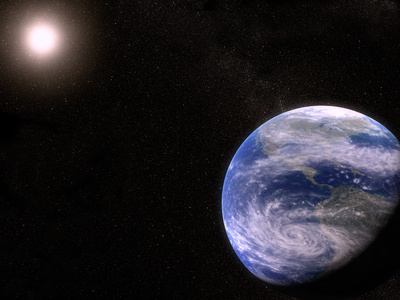It seems reasonable to conclude that solar systems may be a natural formation and that terrestrial planets are a result of the formation of population two stars. If stars are between spectral class F2 and M2 they seem to be suitable incubators for earth-like planets. Binary systems are also suitable for stable orbits if the stars within these systems do not have elliptical orbits and the terrestrial planet is orbiting at an appropriate geographic location either away from or between both stars. If a terrestrial planet is large enough, it can obtain by the mechanisms of volcanism a secondary atmosphere of carbon dioxide. In order to develop into a truly earth-like planet, development of tertiary atmosphere of oxygen is necessary to support the biological process known as photosynthesis. And therefore create an ecology on the planet. The latest discoveries by the Kepler telescope made by Nasa’s Kepler telescope in 2011 was Kepler-22b which is 600 light years away and 2.4 times the radius of earth. This was the first earthlike planet to be observed within the habitable zone of a G type star. This is the most promising earth like planet. Also K2-18b discovered in 2015 which is 120 light years away from earth orbiting a red dwarf star discovered by Kepler telescope and shown to have traces of methane, carbon and dimethyl sulfide around its surface detected by the James Web telescope. Experts think it may have an atmosphere of hydrogen and a surface of water. A hycean planet. On earth dimethyl sulfide is produced by phytoplankton. Therefore at least a privative form of life may exist here . A planet 1.5 to 3 times the mass of earth in the Kuiper belt. may exist detected by computer simulation in 2023 is intriguing. A planet large enough for vulcanism that is no where near the habitable zone of the sun may be earthlike in the sense that it may be is a candidate for life. The question that now arises, given the right geography, conditions and the appropriate amount of time, is life inevitable?
